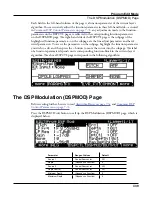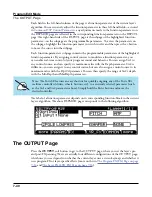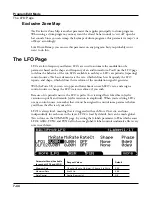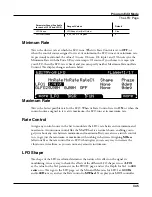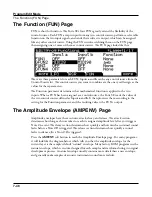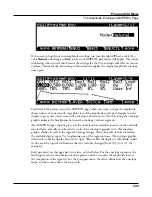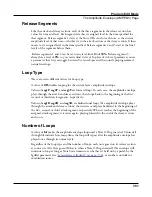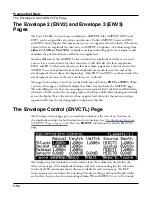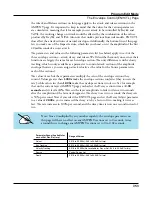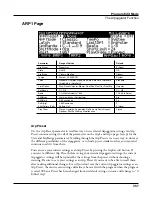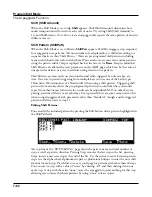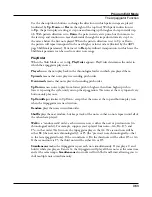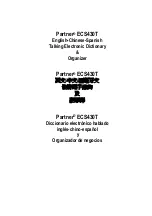
Program Edit Mode
The Envelope Control (ENVCTL) Page
7-52
The Envelope 2 (ENV2) and Envelope 3 (ENV3)
Pages
The Forte SE offers two envelopes in addition to AMPENV. Like AMPENV, ENV2 and
ENV3 can be assigned like any other control source. Unlike AMPENV, however, ENV2
and ENV3 can be bipolar. This means that you can set negative values for them. (Obviously,
you can’t have an amplitude less than zero, so AMPENV is unipolar—the values range from
either 0
to 100% or 0 to 150%). A bipolar envelope controlling pitch, for example, could
modulate the pitch both above and below its original level.
Another difference is that AMPENV always controls the amplitude of the layer, so even if
you use it as a control source for other functions, it will still affect the layer’s amplitude.
ENV2 and ENV3 affect only those layers that have them assigned as a control source. Also,
AMPENV uses an exponential attack (the amplitude rises much faster at the end of the
attack segment than it does at the beginning), while ENV2 and ENV3 use linear attacks (the
attack segment increases at the same rate from start to finish).
The pages for Envelopes 2 and 3 are reached with the soft buttons ENV2 and ENV3. When
you select these pages, you’ll find a display that looks very much like the AMPENV page.
The only differences are that you can program an amount for Rel3; the Rel1 and Rel2 limits,
which are ±100%; and in the envelope graphic, which has a dotted line running horizontally
across the display. This is the zero level line; negative level values for the various envelope
segments will cause the envelope graphic to dip below this line.
The Envelope Control (ENVCTL) Page
The Envelope Control page gives you realtime control over the rates of each section of
the amplitude envelope for both natural and user envelopes (see
). Press the ENVCTL soft button to reach the ENVCTL
page.
The display’s top line reminds you of the current layer. The column on the left lists the
three section types of the amplitude envelope, and each corresponding line lists the values
for the five DSP control parameters that are available for each section type. The DSP
control parameters are: Adjust, Key tracking, Velocity tracking, and Source/Depth, which
are listed at the top of each corresponding column. When AMPENV is set to User mode,


